Tomatoes have become known as the gateway vegetable to starting home vegetable patches. With their easy-going nature and their distinct taste of summer, it’s no surprise.

Unfortunately, as notoriously easy as it is to grow these delicious fruits, they’re not without their issues. They’re beloved by pests and diseases, which can dash any plans for tomato-filled summer.
However, one common tomato problem that many ignore isn’t a nasty disease or pesky pest. It’s sunburn. Or, in this case, sunscald.
If you spot white patches across your young tomato fruits, you know you’ve got a case of sunscald on your hands. As horrible as it is to see these gorgeous fruits losing color to the sun, sunscald isn’t difficult to manage or prevent.
What is Sunscald?
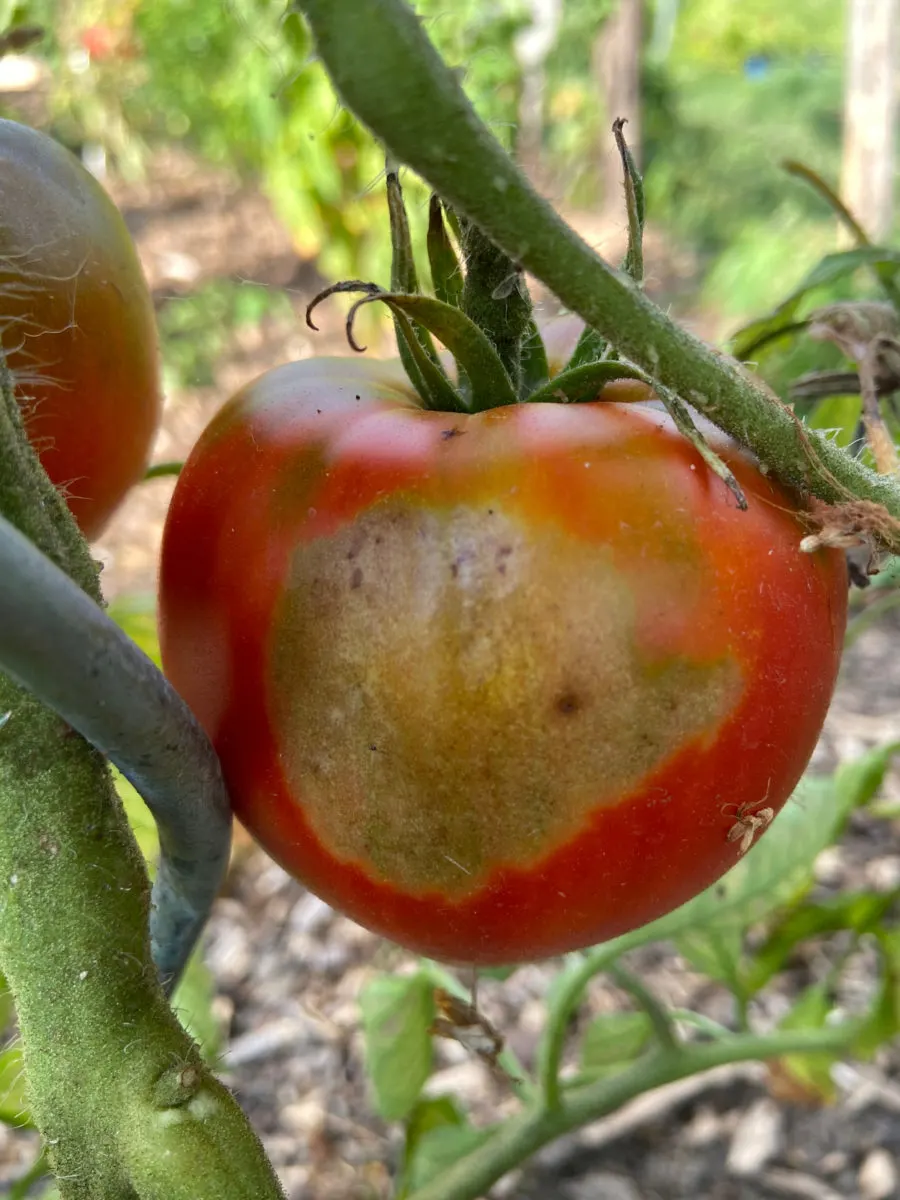
Sunscald commonly plagues tomatoes, and a few other members of the nightshade family, thanks to their love of warmth and full sun. When exposed to intense direct sunlight, the sensitive skins of tomato fruits begin to discolor, developing odd white patches.
While not as dangerous as a bacterial or fungal disease, sunscald is still a condition worth being wary of.
Sunscald usually occurs due to defoliation caused by diseases, over pruning, improper care, or simply being planted in the wrong spot with too much direct sunlight – all things that should be rectified as soon as symptoms pop up.
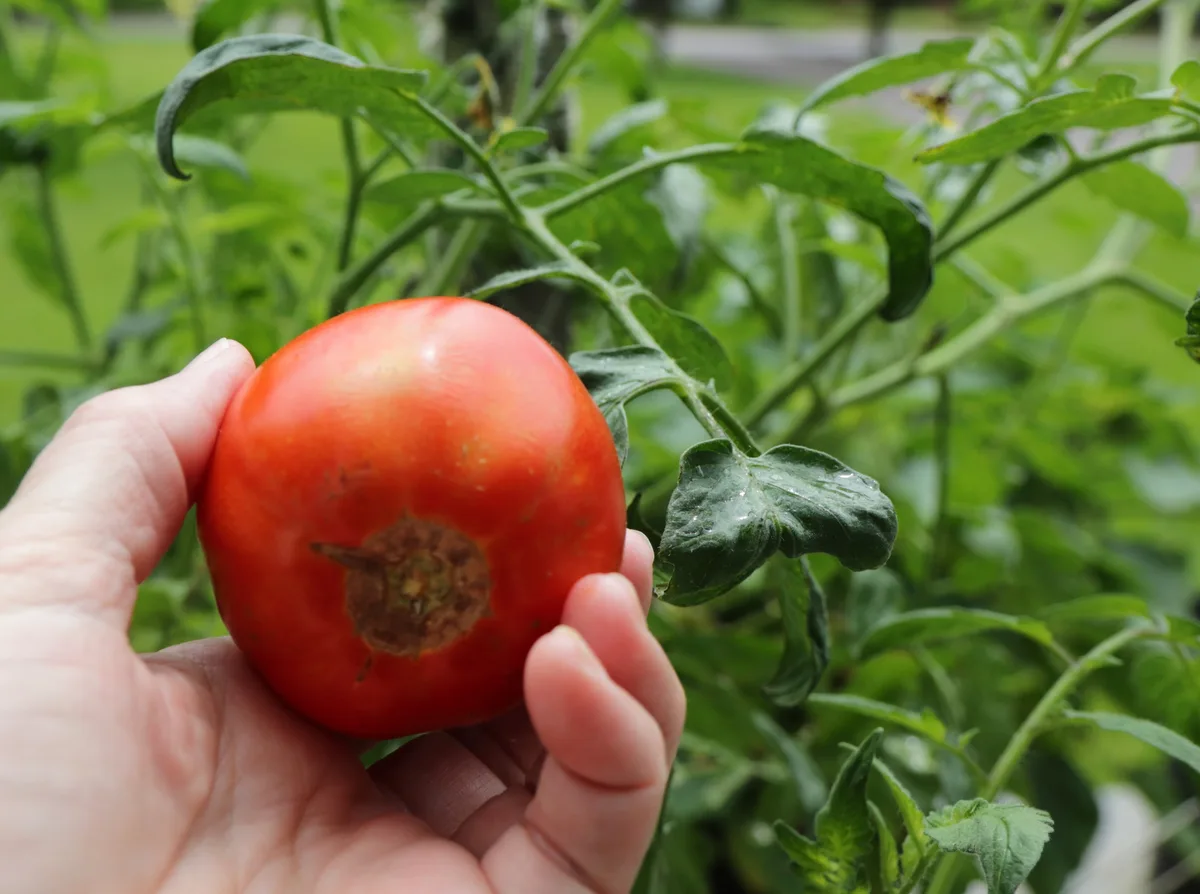
Sunscald normally affects younger fruits beginning to mature, but it can still damage older fruits. At first, during the breaker stage, white patches occur on the sensitive red skins of the fruits.
Eventually, the damaged areas take on a grey hue and become sunken. As the tomato fruits grow, these patches don’t, becoming stretched and often bursting. Unfortunately, these ruptured areas are ripe for diseases, developing black mold as the fruits continue to die.
While not pretty, sun scalded tomatoes can still be eaten, so long as they haven’t begun to develop mold. Simply cut off the white patches and use your tomatoes as you wish; in salads, sandwiches, or ground up in a delicious salsa.
Preventing Sunscald
Add Row Covers
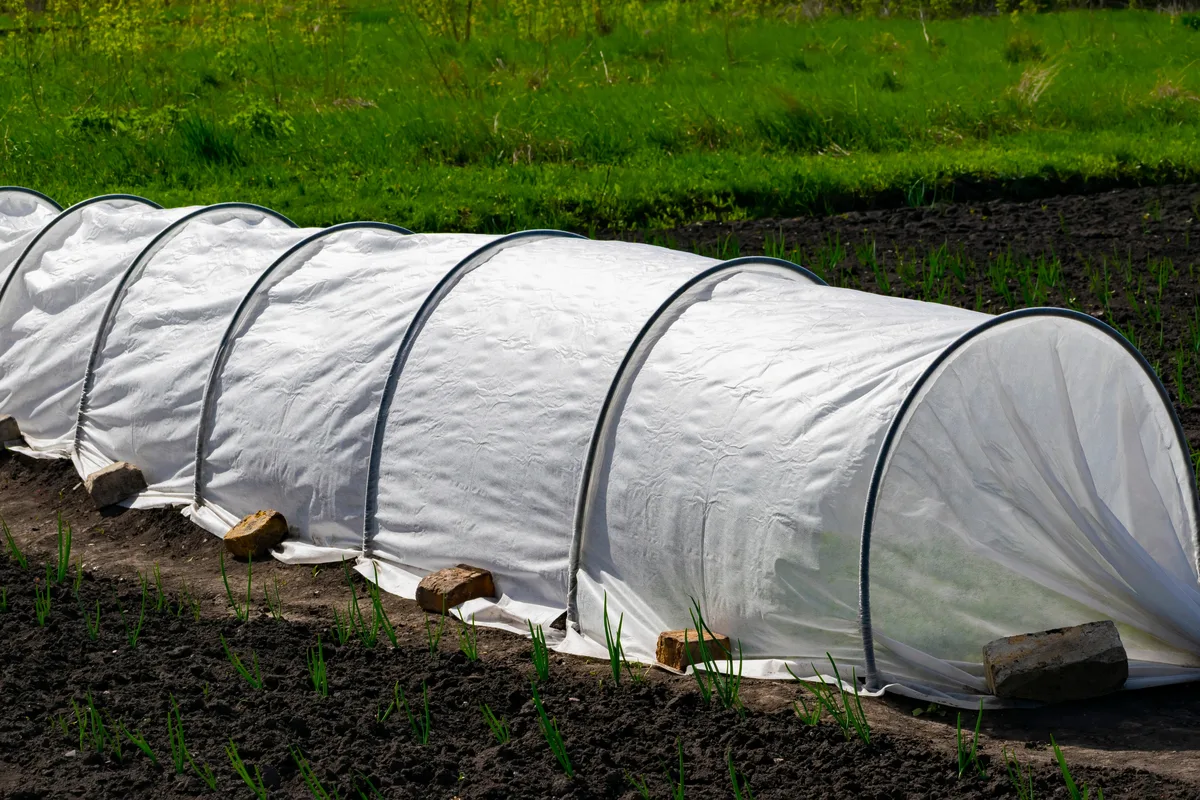
The first step in preventing sunscald is protecting young tomato fruits from the heat and harsh rays of the sun.
Adding artificial shade around your tomatoes is one of the best and easiest ways to do this. Row covers are your best bet, and an absolute must for growing tomatoes at home. They not only protect your tomato plants from the harsh rays of the afternoon sun but also pests and diseases. They also keep your plants and the soil cool during the hottest months of the year.
They’re usually affordable, but also very easy to make. All you need is some shade cloth and something to attach it to – either piping or wires. When making your row covers, ensure there is an opening facing east. This way, your tomatoes can get plenty of gentle morning sun, while being protected during the harshest parts of the day.
Cage Your Tomatoes
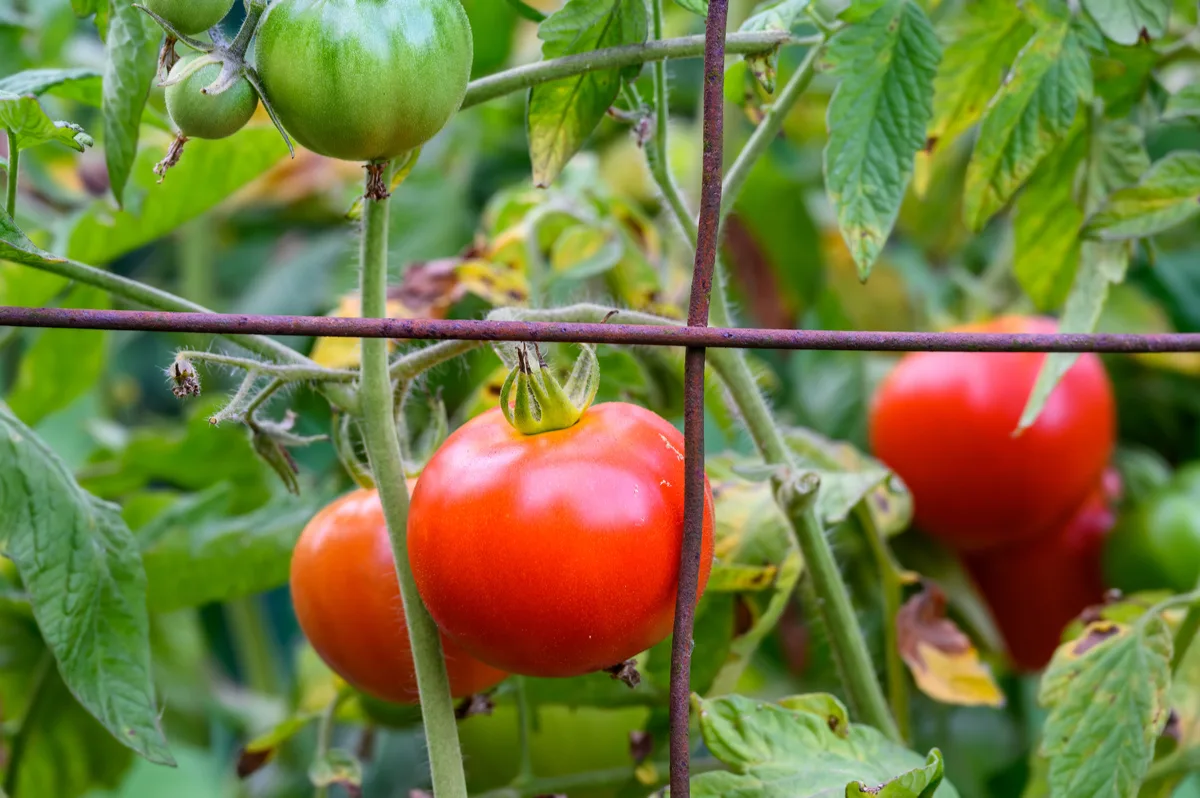
Cages are common in most tomato gardens. They’re often essential for growing determinate varieties, which are shorter, bushier, and in need of support. Cages allow your plants to grow upright, stopping them from spreading across your garden.
Cages have various benefits, from protecting your tomatoes from birds to diseases and pests. Most importantly, if used correctly, cages can protect your tomatoes from sunscald. They allow tomato vines to wrap around the cage, allowing the foliage to shade your young tomato plants.
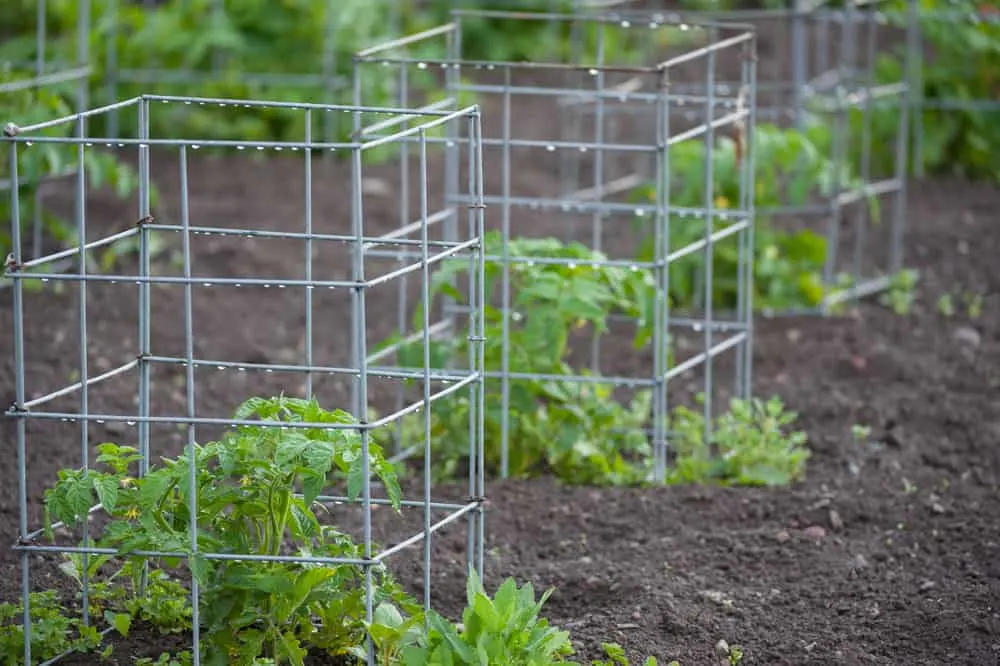
Caging isn’t always appropriate, however. Indeterminate tomatoes shouldn’t be caged and are better protected by row covers and other tricks detailed below.
Even if you’re growing determinate varieties, ensure you get the right cage for your plants. The size and type of your chosen cage are essential to reap all the protective benefits of caging.
Here’s our guide to choosing the right tomato cage for your plants – and the one type you shouldn’t use.
Add Mulch
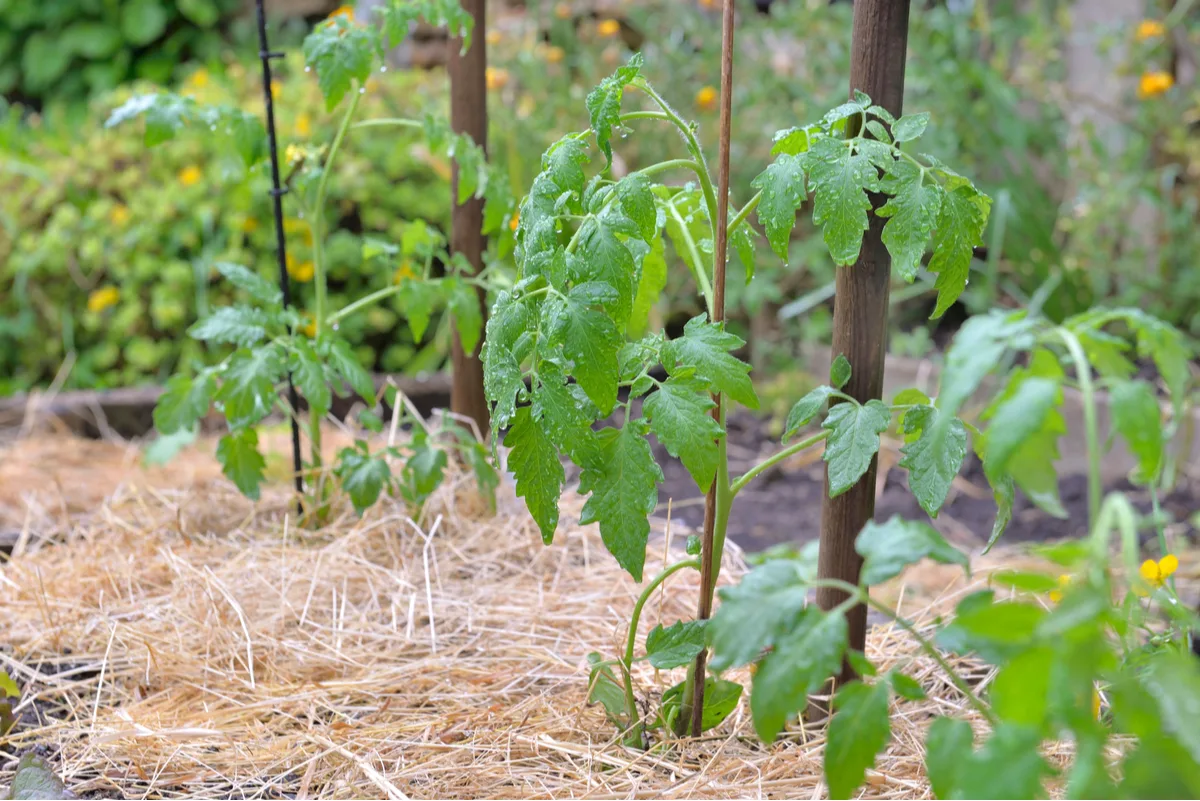
Mulching is another way to keep your tomatoes and their soil cool, preventing heat stress and keeping your plants well-watered. But mulch holds more benefits than that.
Mulching around the base of your tomato plants prevents the growth of weeds, which is one less garden task to do.
Most importantly, however, mulch prevents water from splashing on lower leaves. This stops the spread of various diseases that plague tomato plants and strips them of their leaves, exposing the fruits to direct sunlight.
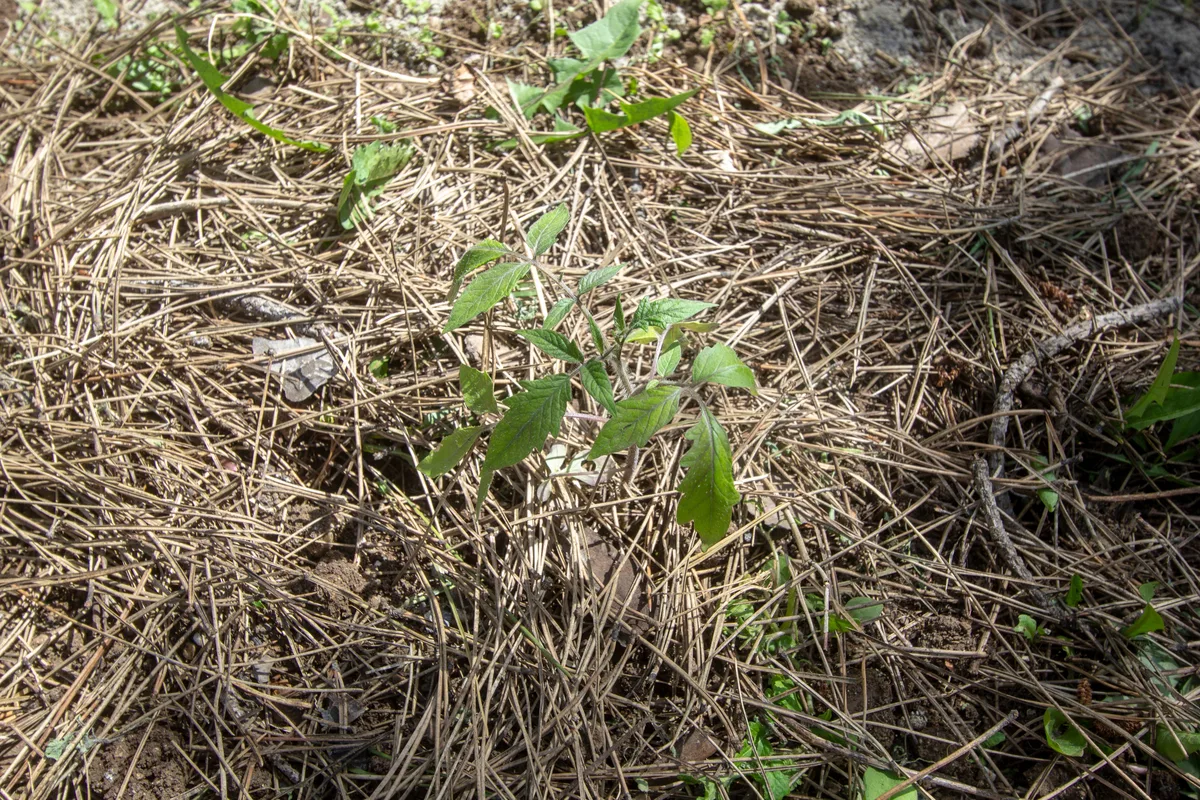
There are several different mulching materials to choose from, but straw is the most common. It’s lightweight and breaks down easily, improving the soil structure.
When mulching, make sure not to add too much. A one-to-two-inch layer of mulch is usually perfect for your tomato plants.
Here’s a guide on how to mulch around your tomatoes.
Water Correctly
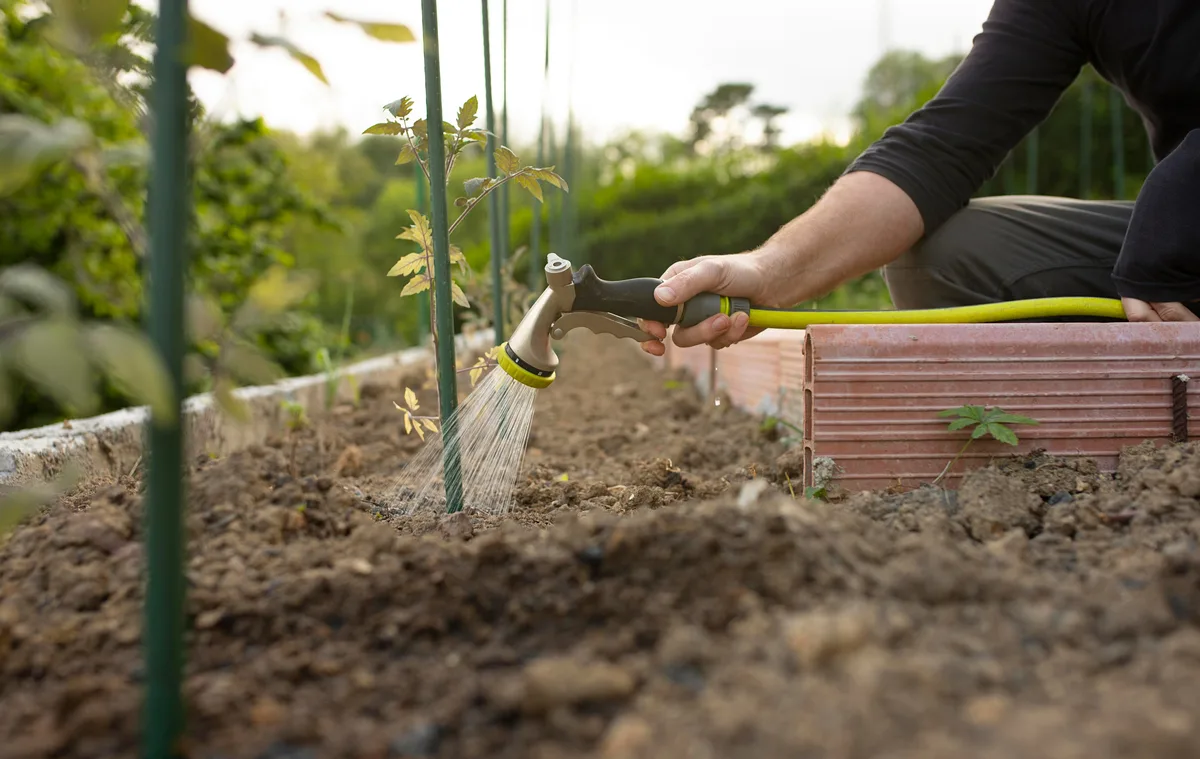
The correct watering techniques are essential in keeping your tomatoes free from pests, diseases, and stress that can cause defoliation. These fruits are usually quite thirsty, but overwatering can be just as dangerous as underwatering.
As with most plants, watering requires a delicate balance. Deep and frequent watering is essential to the health of your tomatoes. Their roots can often reach as far deep as 5 feet. If you don’t allow the water to reach the deepest roots, your tomato plants won’t get the water they require to thrive.
Giving your tomato plants too much water can result in diseases such as root rot and can cause the plants to drop their leaves, exposing the fruits to the sun.
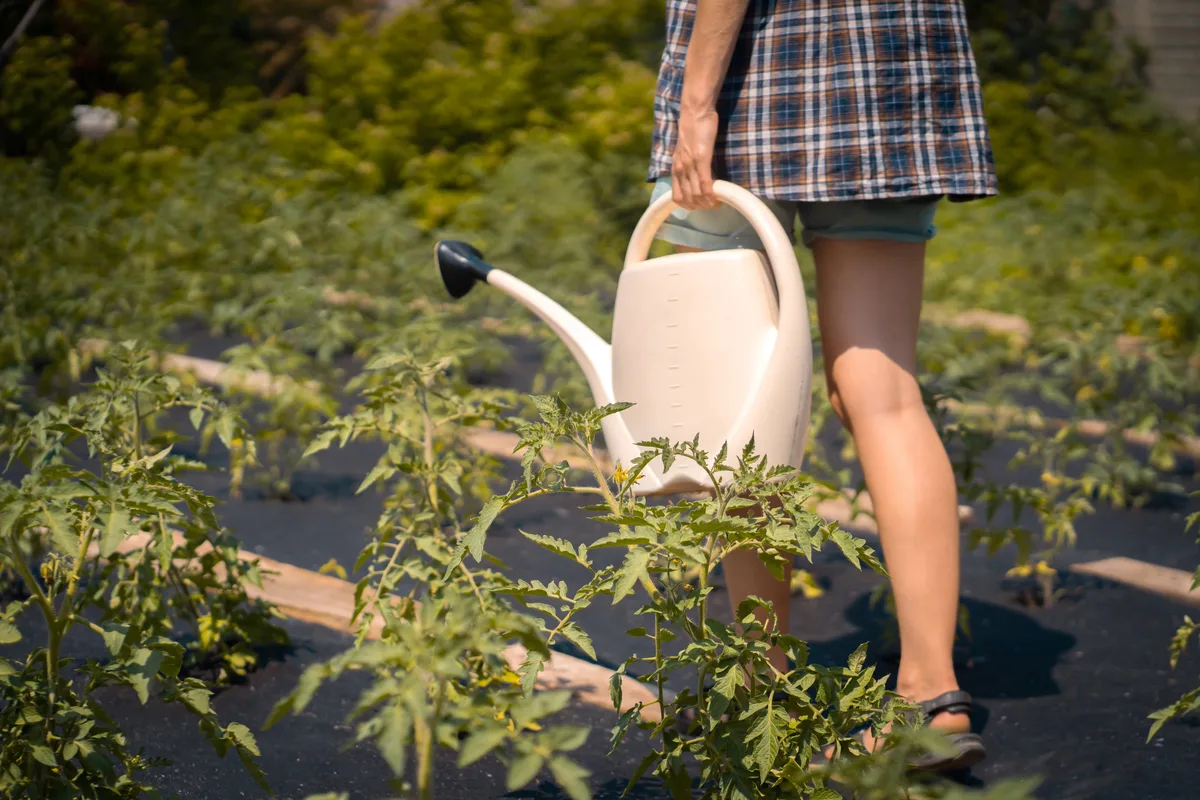
It’s also important to avoid overhead watering as much as possible. Overhead watering methods cause splashing, which spreads diseases.
Avoid watering during the warmest parts of the day, as too much evaporation occurs, resulting in heat stress.
Ultimately, the correct watering methods keep your tomatoes healthy, free from disease, and full of bushy, shielding foliage.
Watch Your Pruning Habits
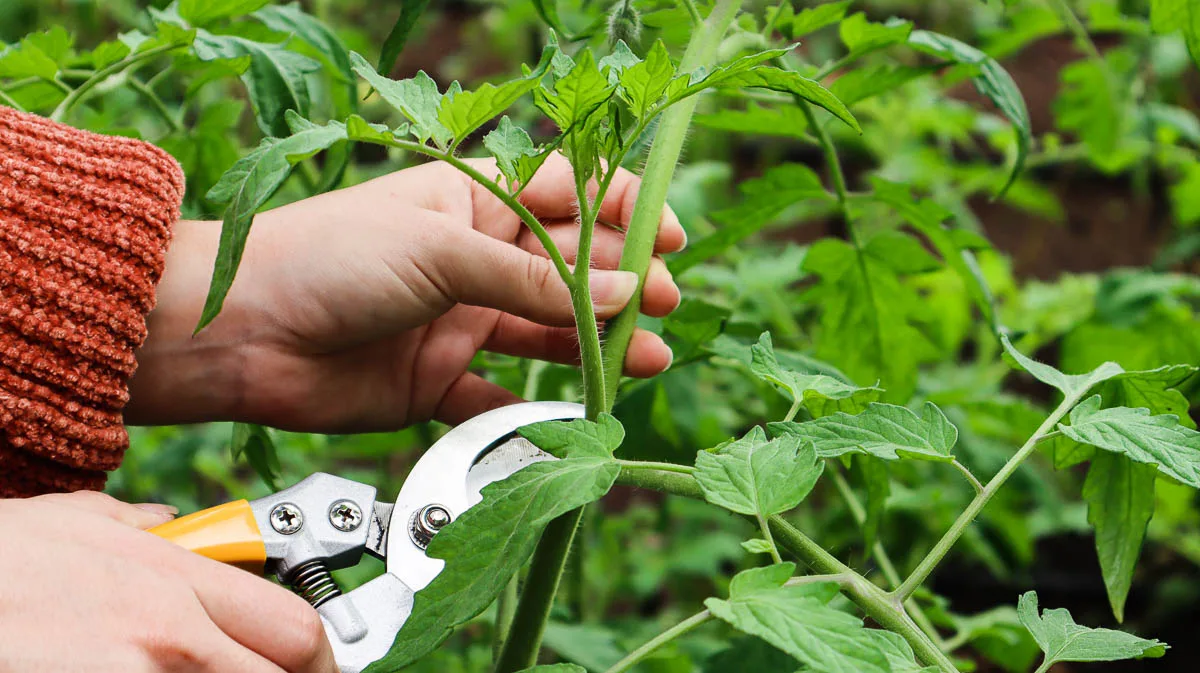
While the lack of protective foliage can often be blamed on diseases and pests, it’s sometimes our fault.
While not essential, pruning does have several benefits and should be seen as an important gardening maintenance task. Pruning correctly keeps your plants a manageable size and encourages larger yields. It also increases airflow, preventing the spread of disease.
However, overdoing can quickly expose vulnerable fruits to direct sunlight. This exposure can lead to yellow and green shoulders and, even worse, sunscald.
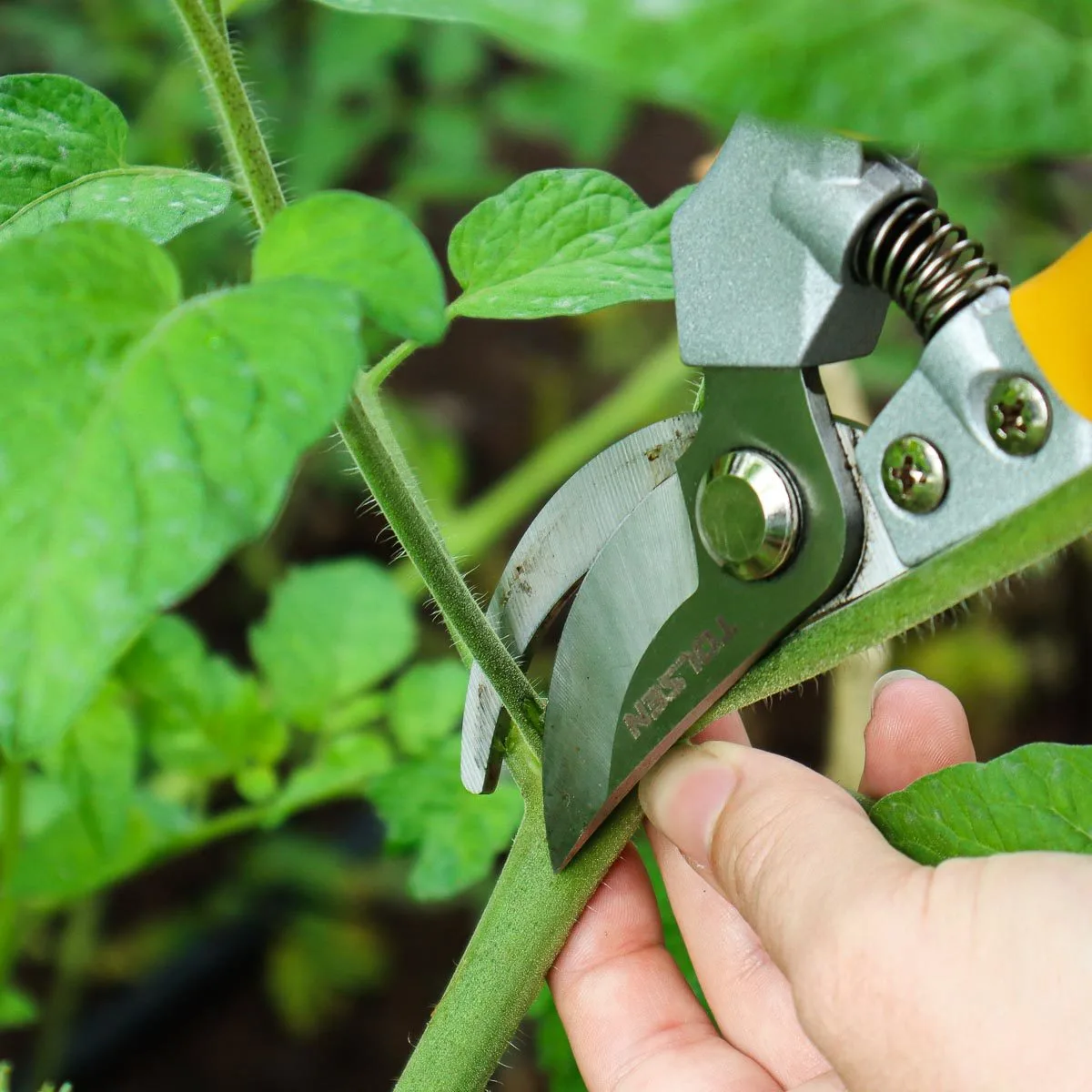
Your pruning habits will depend on the type of tomatoes you’re growing. Determinate tomatoes don’t require much pruning, sometimes none at all. Indeterminate varieties, however, are slightly more demanding.
Indeterminate tomatoes tend to grow tall and often require staking. Their heavy vines can cause branches to snap and can sometimes topple the plant. Pruning can help mitigate the weight.
Pruning correctly is another delicate balance. Here’s a simple guide to get the most out of pruning your tomatoes, without risking sunscald.
Encourage Foliage Growth
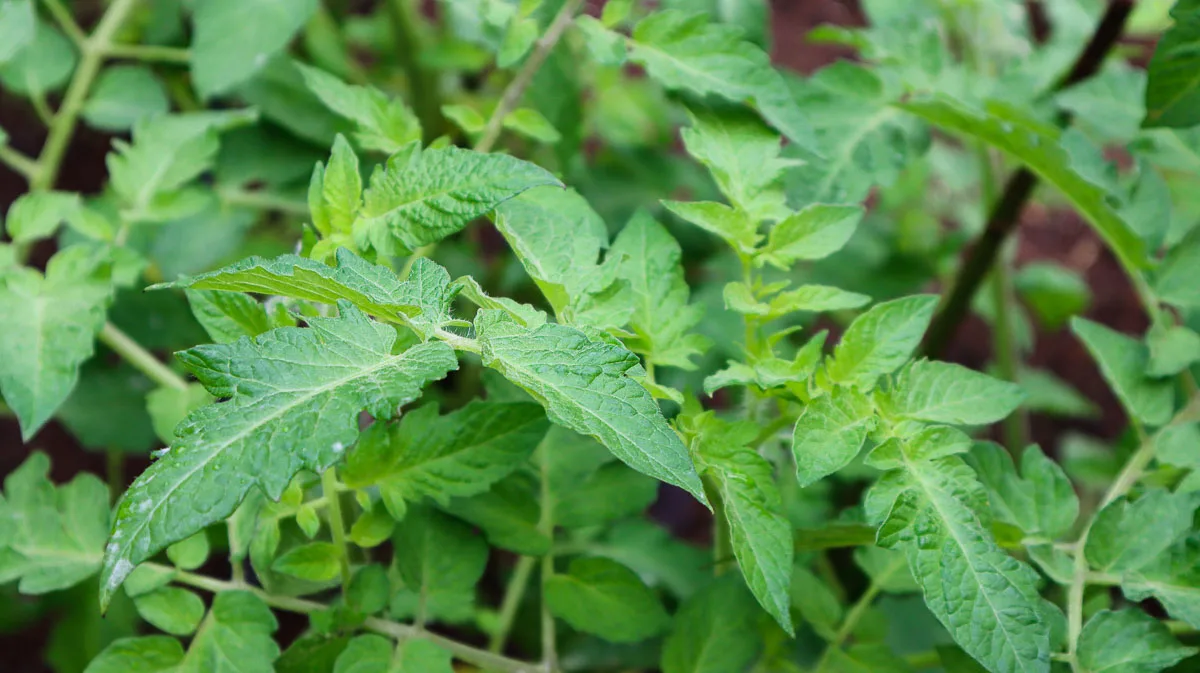
Sometimes, your tomato plants aren’t as bushy and leafy as you’d like, leaving your delicate fruits exposed. If that’s the case, you may need to encourage more foliage growth. While the correct watering methods, general pruning, and correct care are your best bets at getting your plants to grow properly, you may need to switch up your fertilizing routine.
Fertilizers are made up of various nutrients, split into three groups: micronutrients, macronutrients, and secondary nutrients. The most important are macronutrients, made up of nitrogen, phosphorous, and potassium.
Altogether, these nutrients affect the overall health of your tomatoes, but, individually, they target certain parts of your plants. Nitrogen helps encourage foliage and stem growth, while phosphorous is important for root growth and flower and fruit development. Potassium is an all-rounder nutrient.
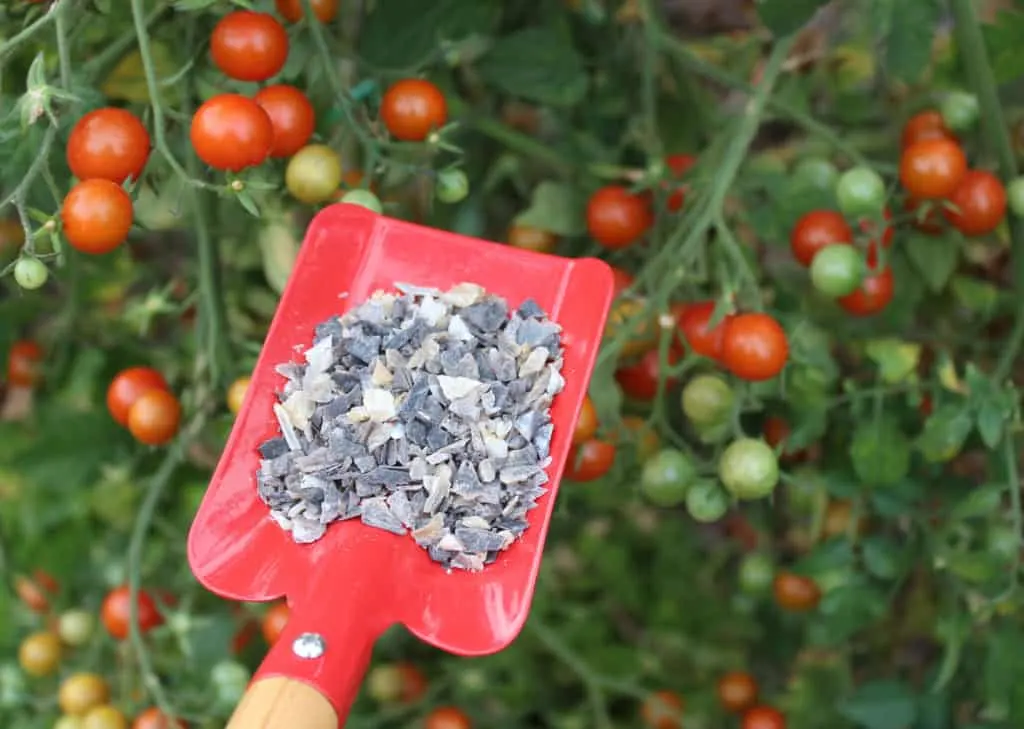
To encourage better foliage growth, opt to add a nitrogen-rich fertilizer to your tomato plants during their growing season. The added bushy leaves will create a natural shield for the delicate tomato fruits.
As simple as this trick is, it’s important not to overdo it. Too much nitrogen can lead to spindly growth, and low fruit and flower development. Overfertilizing, in general, can also lead to leaf and root burn – both detrimental to your plants.
Plant Resistant Varieties
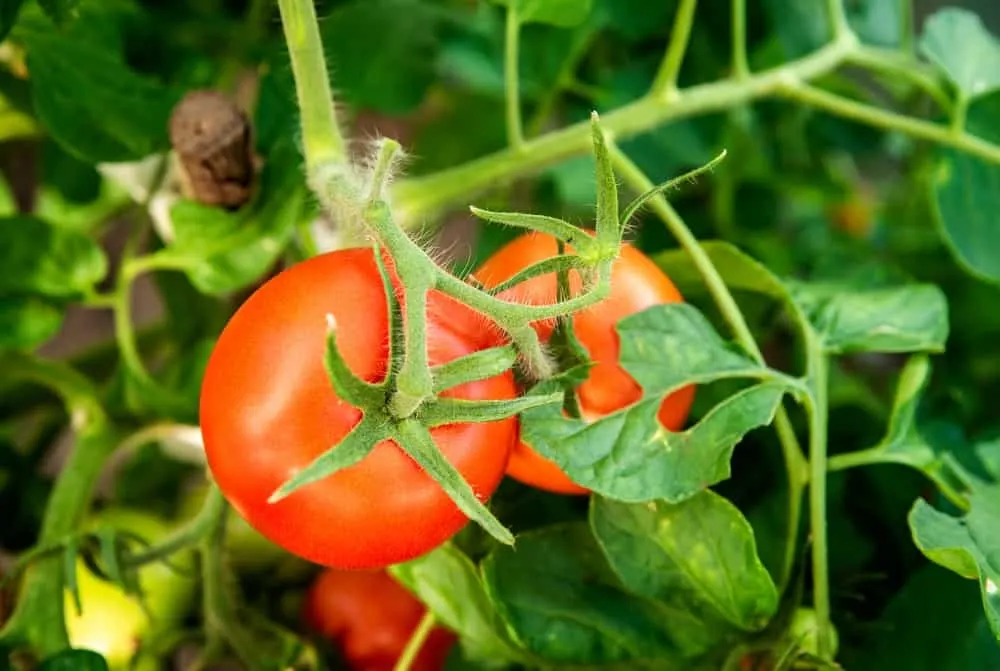
As mentioned, heat stress can lead to sunscald. While some of these tips and tricks can keep your plants cool, sometimes you need to take extra precautions. If you live in very hot climates, you may need to plant heat-resistant varieties.
Luckily, there are several heat-tolerant tomatoes that you can choose from to suit your tomato needs. For indeterminate tomato lovers, you can choose Big Beef or Fourth of July, amongst many others.
There are several heat-resistant determinate tomatoes too, like Sunbeam and the aptly named, Heatwave II.
You should also plant disease and pest-tolerant tomatoes. While not eliminating the threat of these completely, it does reduce the chances of them latching onto your tomatoes.
Pick Early
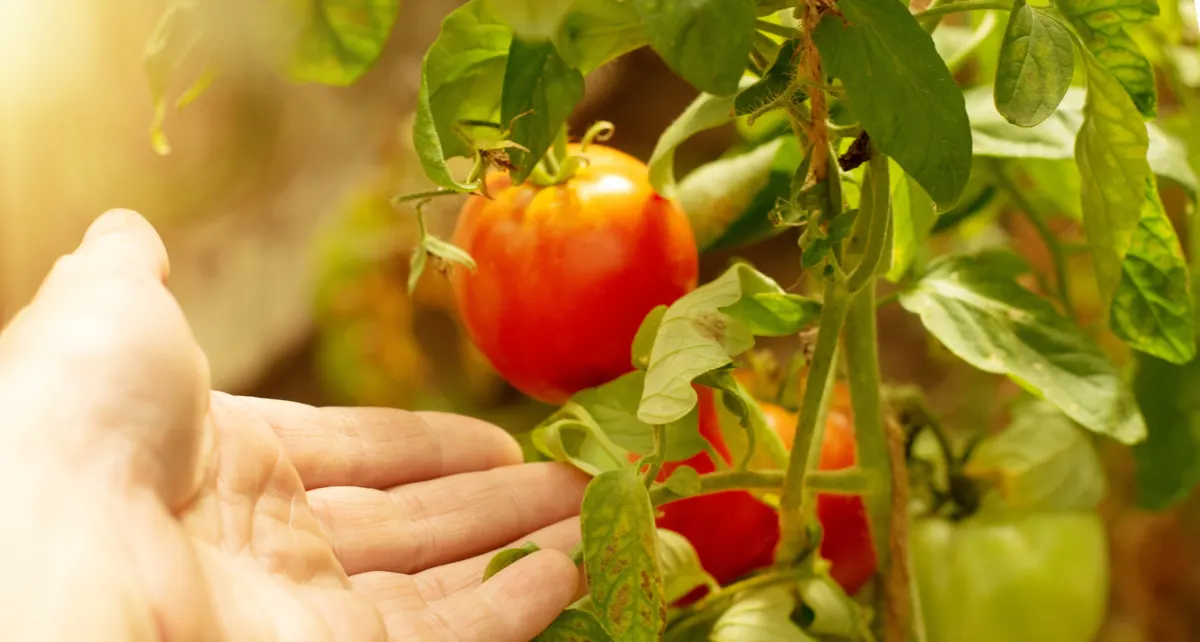
Despite all that you might do to prevent your tomatoes from burning in the sun, it’s not always enough. Sometimes, you’ll need to pick them up early, during the breaker stage, to keep them safe from sunscald. Early picking can also help prevent your tomatoes from splitting.
The breaker stage is when tomato fruits begin developing their gorgeous color. During this stage, they are the most vulnerable to sunscald.
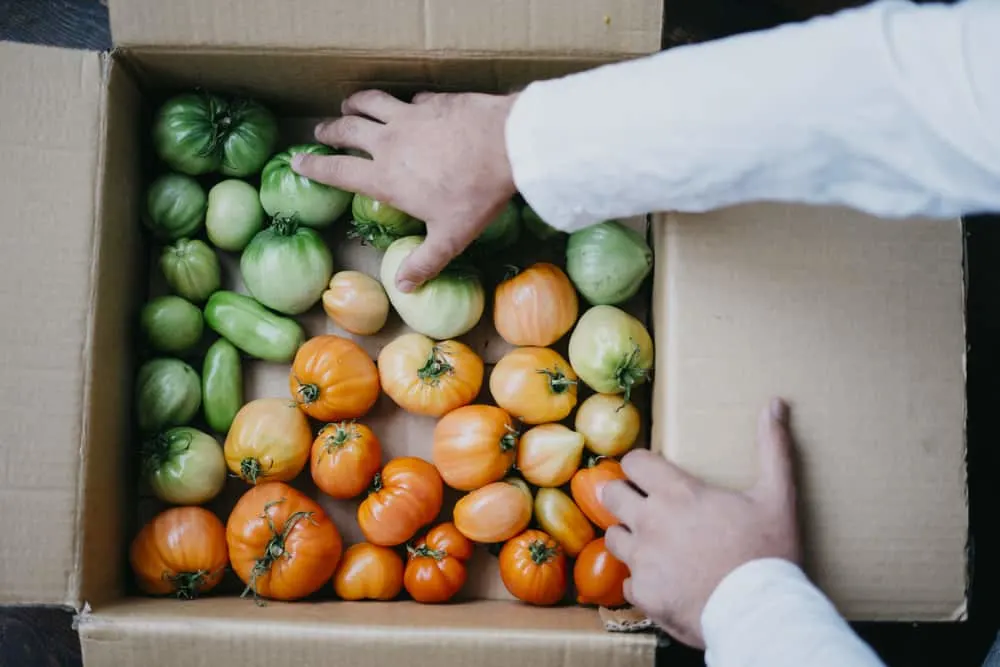
Harvesting tomatoes early is a relatively contested subject. Many claim that tomatoes taste better when ripened on the vine. But, once your tomatoes have passed their green stage, nothing more can affect their flavor.
Picking early not only prevents sunscald, but you can also protect your fruits from major changes to their environment, like heatwaves and excessive rain. It also gives you control over the ripening process.
Simply harvest your fruits during their breaker stage and pop them on your kitchen counter. They’ll ripen on their own. Alternatively, for faster results, stick them in a paper bag or container.
Seeing the delicate fruits of your tomato plants develop those ghastly white patches can be disheartening. Luckily, if you catch them in time, your tomatoes are still useable and safe to eat.
To avoid sunscald in the future, however, and protect your plants from various other issues, follow the tips and tricks above.
